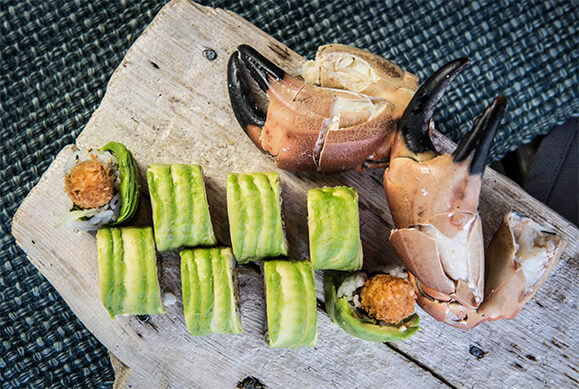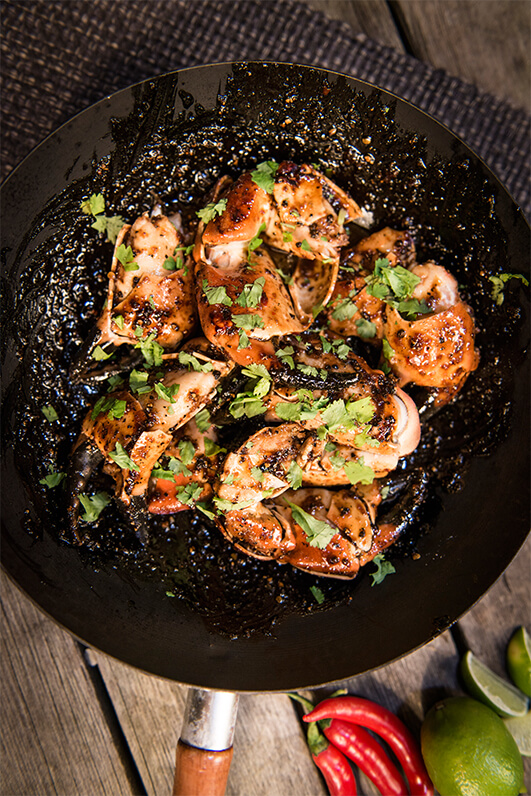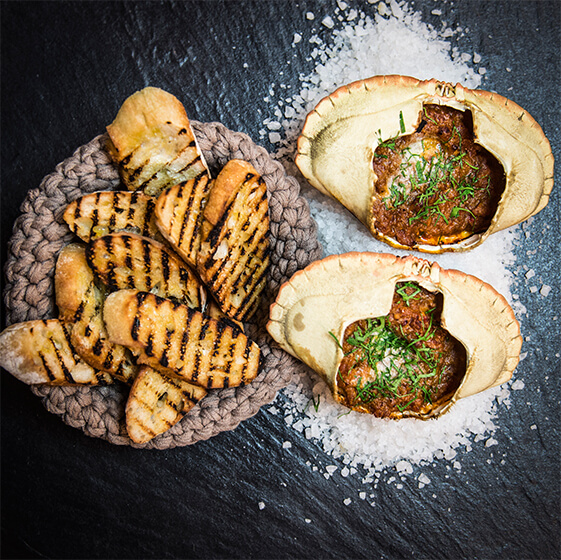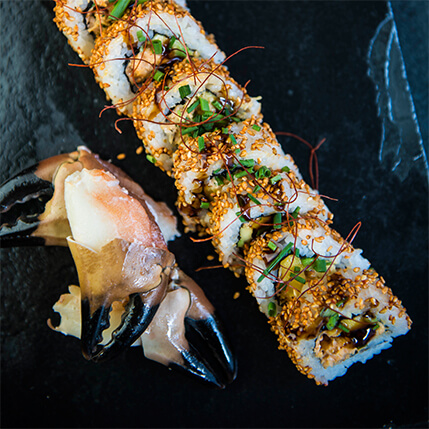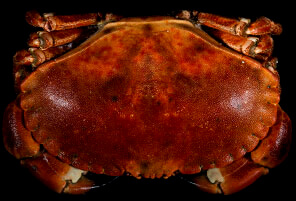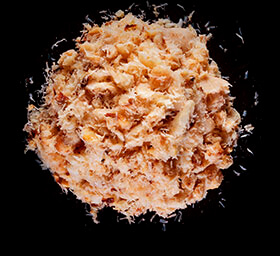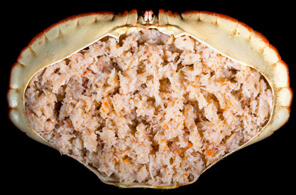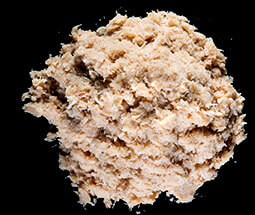Brown crab (Cancer Pagurus) is a creature that adores the cold, clean water along Norway’s coastline. In fact, Norway’s seaside towns are full of tales from locals and their attempts at catching these sleepless crustaceans.
Yes, you read that correctly: the Norwegian brown crab doesn’t ever close its eyes, and it doesn’t actually sleep.
A knowledgeable Norwegian will tell you that if you look in the right place, you can even catch these restless creatures with no more than a flashlight and quickness of hand. However, if your timing isn’t right, you might just end up with a nasty pinch from the brown crab’s claws.
The brown crab is found in large numbers along the Norwegian coast, providing delicious meat to those who seek it, all the way from southerly Skagerrak to Troms in the north.
The main crab fishing season is between July and November, although you can catch these little guys all year-round. In Norway, only the adult is fished, and this is done using special equipment that doesn’t affect the natural habitat.
It is truly an abundant treat, with sustainable fishing and a high reproduction rate ensuring that the brown crab will continue to strive in these waters.

Natural
Habitat
As it is nocturnal, you are unlikely to ever catch a glimpse of a brown crab feeding during the day. During daylight hours, these creatures know their best bet at longevity is to find a safe resting place while keeping their eyes open and using their antennas to scan for danger. Brown crabs love to inhabit a rocky or sandy seabed, living at a depth of between 6 and 40 meters, with the larger specimens inhabiting the deeper water.
It is a tactic that has worked well for them, with some of these crustaceans managing to live to be a hundred years of age. However, the average lifespan is closer to between 25 and 30 years of age. The vast coastline is full of these clawed creatures, making the brown crab one of the country’s most accessible delicacies. In fact, brown crabs have been part of the Norwegian diet for centuries.

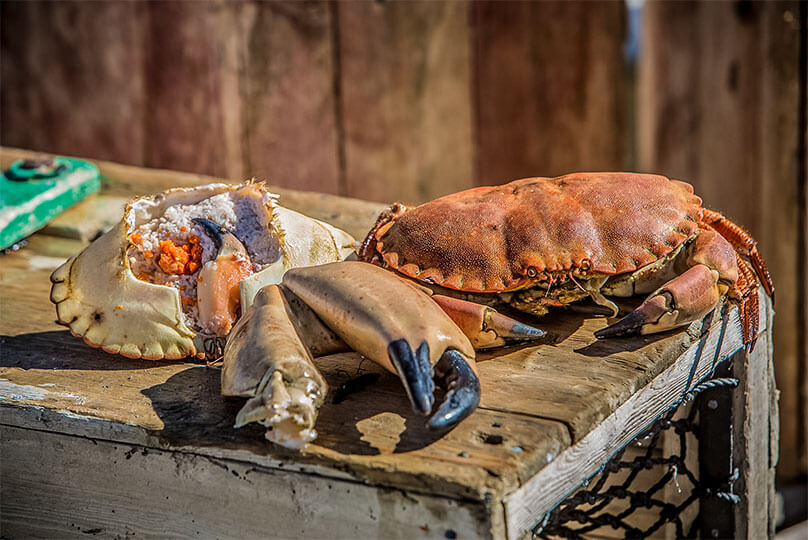
That being said, areas such as Hitra in the North, have become so associated with this creature, that some even know it as the Hitra-crab.
Although there are bigger edible crabs in the seas surrounding Norway, the brown crab is the largest one that occurs naturally. Both the red king crab and the snow crab were both introduced by humans.
Elsewhere in Europe, these crabs can be found throughout the North Sea, Irish Sea, English Channel, and down the coast of Portugal.
Physical
Characteristics
As you may have guessed by their name, brown crabs are reddish-brown, with an oval carapace and ‘pie crust’ edge. The younger ones can be a more purplish-brown color.
They have black tips to their claws, which can give you a nasty pinch if you get too close. They also have antennas, which are ideal for seeking out danger and for hunting purposes. As previously stated, one of the most interesting physical characteristics of the brown crab is that it doesn’t close its eyes.

Like all crustaceans, the brown crab must shed its shell to grow. This process is called molting. This isn’t necessarily a yearly occurrence, as it takes up a huge amount of energy and leaves the creature in a vulnerable position. Older crabs, whose growth has slowed, will sometimes only engage in molting every other year. A brown crab reaches full sexual maturity at about five to seven years of age.
As Norway is a country that recognizes the importance of sustainable fishing, there is a minimum landing size to ensure that a crab reaches maturity before it is fished. They are also only caught using traps that have little to no impact on the local environment.
This, combined with the fact that the brown crab reproduces at a speedy rate, ensure that there will be no shortage of brown crab.
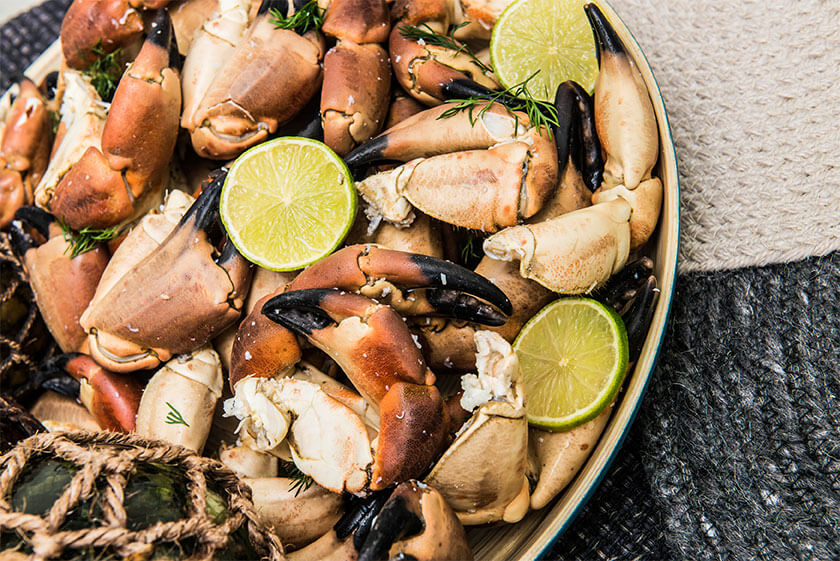
On average, from the top of its shell, the brown crab measures at around 9cm long and 15cm wide, but it can grow much larger, with some reaching around 25cm in width. Generally speaking, the female crab has a wider apron than its male counterpart.

Diet
The brown crab loves barnacles. Though, their diet consists of a variety of other smaller crustaceans and mollusks too. The creature is actually quite the hunter, renowned for its ability to ambush its prey and even dig pits to reach grub that is not easily accessed.
Don’t be shocked if you see a brown crab in the tidal zone, as during the summer and autumn months, they will often enter this area to feed on blue mussels and other treats along the shore. They also don’t mind scavenging, being a bit of an opportunist when the need arises.

Nutrition
Crabmeat isn’t just tasty, it is also nutritious—rich in protein and vitamin B12 it also provides the body with selenium, an important antioxidant.
It also provides the body with Omega 3, which contributes to the normal functioning of the heart and brain and normal blood pressure. Its meat structure lacks connective tissue, so it generally is easy to digest for people of all ages.
In terms of taste, the male brown crab is more of sweet white meat, while the female has more of rich brown meat. Both its claws and its shell are full of this scrumptious sustenance.
However, both are extremely tasty and can feature in both gourmet recipes and more simple snacks. The crab is generally cooked whole but can be used in a range of recipes, ranging from a classic Scandinavian “dressed” shell to sushi.
